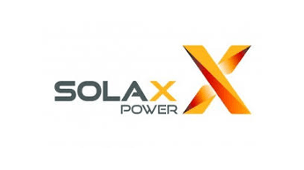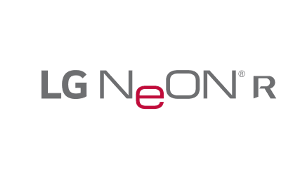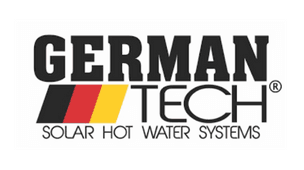Free Solar! Cheap Solar! Get A Free...............
)
Do alarms go off in your head when someone says something is free or buy this and get that for free? What about "its okay the government is paying for it"...
Do you remember the water tanks fiasco and then there was the home insulation scheme; or the home builders that gave away free pools when you signed up to build a home? And the list goes on.
So what about FREE Solar……………
Well the truth is that anyone looking to install solar power, even after rebates, will need to pay somewhere around of $4,000 out of pocket for a QUALITY 1.5kW grid connected system installed by an established and reputable installer.
It is true that you can get FREE Energy but that is well after the contract and the installation, usually 5-12 years depending on your investment type and whether your system is grid connect, grid assisted or stand-alone solar. This is the period when you really can be cash flow positive and truly get something for nothing “FREE ENERGY” or “FREE SOLAR”.
Within a few years of your installation you can be receiving some FREE Energy when compared to your neighbours when you consider the increased cost of purchasing power from the grid. This means you can have a substantially lower cost of living in a few years by becoming less reliant on the electricity companies.
Remember - Solar power systems are not free, but they can be a very good investment and the right start to obtaining free energy over time.
“OVER TIME”
That's the key. The really big benefits come the longer you have solar power. That's why it's so important to choose a good installer and get a system that will last long enough to pay for itself over and over again.
Cheap systems are already failing and falling apart in less than 3 years and if this is you, you could be out of pocket thousands of $$$$$ to rectify or remove the system.
So my point is buy once, buy quality and reap the rewards for you and you’re family. If you believe solar power is the right investment for you - ask us come out and visit, to chat about options that would best suit your personal situation.
With no obligation to purchase a thing, no sign here now and get this best ever deal; this price is only good till 5pm or some other pushy marketing scam what have you got to lose?
Grid Assisted Electricity
One hundred years ago receiving your electricity from the electric grid was a goal for everyone. Forty years ago, many people got interested in being independent of the electrical grid. Recently, the idea of being grid-tied has gained acceptance. In this article I am going to propose a new idea which I have decided to call grid-assisted. If this idea interests you, I would like to hear from you.
The concept is simple. It means that you live operating as self-sufficiently as is practical from the electric grid, using it when it is to your benefit. Depending on where you live and how reliable your electric grid is, the practicality of this approach can be anything from interesting to the solution. In order to understand why this is a good thing, let's look at a bit of history.
Electrical Power Approaches
Before there was an electric grid, the only way you had to meet your electrical needs was batteries. This meant either primary batteries which you would discharge and then replace or a rechargeable which you would discharge and then take to where it could be recharged. The inconvenience and expense of this approach made the idea of electricity brought to your house — i.e., a grid connection — highly desirable.
In Queensland, Australia, grid connections sprouted up in Brisbane from1883 and rural electrification got serious with Charters Towers receiving electricity supply in 1897, Rockhampton in 1898, Toowoomba in 1905, Warwick in 1912 and Ayr was supplied in 1914. A number of coal mines in the Ipswich district were generating electricity by the early 1900s as well. Today, while there are still areas where you can be away from the electrical grid, the reality is that most people have a grid connection or at least the option to have one.
Even though many people resisted the move to the grid; the main problem with being off-grid 40 or 50 years ago was technology. Producing electricity suitable for home use was expensive. Conventional methods such as fuelled generators could not compete with grid prices and alternatives such as solar photovoltaic’s had prohibitive costs.
On the consumption side, demand remained high because of technology as well. For example, incandescent lighting was the norm and many electronic devices still used vacuum tubes. Modern technology such as light emitting diode (LED) lighting and solid state electronics makes much lower demands possible.
A newer mainstream approach is what is called grid-tie. With this approach, your house locally produces power (generally using PV solar panels) but operates symbioticly with the traditional electrical grid. That is, you produce conventional power (120 or 240V AC, 60Hz for example).
A device called a synchronous inverter synchronizes the power you generate with the electrical grid. The rest of your system is conventional. That is, your house is otherwise exactly like an on-grid house, The benefit is financial—your electrical bill is reduced because you use less net energy from the grid.
The big disadvantage of a grid-tie system is that you must have an active grid connection. If the electric grid goes down, you no longer have electricity. While this may seem strange as you are producing power, safety considerations make this the case. Thus, grid-tie systems do nothing to address loss of power due to the failure of the electric grid.
Grid Assisted
I propose a grid assisted scenario as a solution to all the shortcomings of current approaches and more. I suggest that it is more flexible in meeting your needs, easily customizable as needed, lower in cost than any other approach and easy to understand. It can be done today with currently available components but would benefit from new devices which could be specifically designed and marketed for use in grid assisted systems.
The only shortcoming of this approach I can find is that it is not likely to gain favour with companies with a vested interest in the current electrical grid approaches. You see, it will decrease their opportunity to increase profits.
Let me explain how a grid assisted system would work. The concept is very simple. Details will vary depending on your needs and the flexibility encourages this. I am going to use the electrical system of your car as a way to introduce the concept.
In your car, you have a battery, an alternator to charge the battery when your motor is running and an assortment of devices which run off the electrical system. Think of your alternator as the equivalent of an electrical grid connection.
When your motor is not running you can listen to the radio, operate your lights and such. They are powered by the battery. While the length of time these devices can be operated is limited by the capacity of the battery, they all function without input from the grid, your alternator.
That's it. That is the 12 volt equivalent of what I am suggesting as a grid assisted system. If you think about it a bit, you could customize this system by adding a larger battery so devices could be run independently for longer periods of time and other sources for charging the battery including PV solar and an AC-powered battery charger could be added. The system could easily be customized to meet your needs. While this may not sound practical for a car, this is how a typical system on a sailboat operates.
Let's move the concept from a 12 volt car to your house. While operating some devices (such as LED lighting) directly from 12 volts may make sense, you probably own many 240V devices such as your coffee maker, other kitchen appliances and tools such as an electric drill or saw. While there are 12 volt alternatives to many of these devices, being able to move to grid-assisted with the minimum of cost and life changes is the goal. Thus, the first new ingredient we need is an inverter.
An inverter is a device that converts direct current to alternating current. For our grid assisted home, we will want one that runs on a relatively low DC voltage (while 12 volts like your car is a choice there may be reasons to go with a different voltage) into 240 volts AC. Such devices do exist. On the low end, there are small units which plug into your car cigarette lighter allowing you to run low-power AC devices (an electric razor, radio and such).
There are devices which connect directly to your car battery and produce 2000 watts and more. While I don't see these as the right long-term solution for a grid assisted house, the technology does exist and for a minimal investment you could start converting to this approach. Let's just say there are current solutions. I will get into the details of better alternatives later.
Let me now explain another advantage of a grid assisted system. If, for the moment, we assume there is a battery powering the inverter, it can be used to smooth out your electrical demand. Much like in your car, your alternator doesn't need to always produce more power than your auto accessories consume, it just needs to be capable of producing more energy than the average demand.
What this means is that the peak demand on the electrical grid can be substantially reduced for your home, even if all the energy you ultimately use does come from the grid. This is very important for two reasons. The first is that the demand for electricity by most users in a region peaks at about the same time. For example, household demand is very low at night when most people are sleeping but peaks in the early morning and early evening. Levelling out your demand on the grid means the peak capacity of the grid itself can be reduced. Or, looking at it another way, the current grid can support many more uses if grid assisted became the norm.
For more information on a grid assisted system contact us:
LED, Compact Fluro and The Truth Behind 12 Volt Halogen Downlights
Let’s talk about those wonderful looking 12 Volt Halogen Down lights that have been all the rage since the 1990’S – every day I walk into a home that has 5 to 500 of these lights, other than noticing how bright the house is I also notice how hot the house is. The heat that comes off these lights is lost energy being burnt up, this heat makes your home or business hotter therefore requiring more cooling – so there is your first expense.
I love the way sparkies and electrical shops used to sell these, because they look so good the sale is half sealed, the next thing they focus on is the 12Volts and not 240Volts – it makes sense doesn’t it, lower volts must mean it’s cheaper to run right? Wrong…. In fact what counts here is the wattage of the bulb used, and most of the halogen lights are 50 watts or more, so let’s say you have a bedroom and whack in 4 halogen lights at 50watts – you have just used up 200watts of energy – the other option would have been a bayonet or a round fluro type fitting – these would be no more than 60 watts or with compact fluros 10-12 watts. And lets say you have 50 x 12 Volt Halogens in the house that’s 2500 watts.
So what can you do when it comes to lights? Well first of all if you have the old incandescent light bulbs, pull them out and throw them away – there now illegal to import and to sell – and they also burn energy like it’s gone out of fashion.
So what now – Compact Fluros, they are affordable give great light, they are cheaper to run than the old incandescent lights; however they are fragile and not good for the environment as they contain Mercury – for more information on the dangers of CFL lights read our blog: http://bit.ly/YOdQIp
LED
The light-emitting diode (LED) is one of today's most energy-efficient and rapidly-developing lighting technologies. Quality LED light bulbs last longer, are more durable, and offer comparable or better light quality than other types of lighting.
Energy Savings
LED is a highly energy efficient lighting technology, and has the potential to fundamentally change the future of lighting in the United States. Residential LEDs -- especially ENERGY STAR rated products -- use at least 75% less energy, and last 25 times longer, than incandescent lighting.
How LEDs are Different
LED lighting is very different from other lighting sources such as incandescent bulbs and CFLs. Key differences include the following:
Light Source: LEDs are the size of a fleck of pepper, and a mix of red, green, and blue LEDs is typically used to make white light.
Direction: LEDs emit light in a specific direction, reducing the need for reflectors and diffusers that can trap light. This feature makes LEDs more efficient for many uses such as recessed downlights and task lighting. With other types of lighting, the light must be reflected to the desired direction and more than half of the light may never leave the fixture.
Heat: LEDs emit very little heat. In comparison, incandescent bulbs release 90% of their energy as heat and CFLs release about 80% of their energy as heat.
Transformers and Drivers for MR 16 Globes
If you are using GU 10 based 240 volt globes then you have no worries. However if you are using MR 16 based globes or need a dimming function, you will be using a Transformer or
Driver to power your lights.
Many electronic halogen transformers will not work successfully with LED globes. It is critically important to use the correct transformer/driver with MR 16 based LED globes.
The Australian Electrical Code states that the transformer must be changed when replacing the halogen light bulb with a different type of bulb, including LED.
If you choose to ignore this and install an LED bulb using the existing driver note that the brightness, smoothness of light output and life of the LED globe is dependent on the transformer or driver you use. Generally speaking wire wound transformers will successfully run most LED globes, but, they are not tuned to give the utmost in performance or globe life. Using these transformers with a 5 watt LED will still cost you the same as running a 10 watt bulb due to the transformer not being designed for LED.
Also be aware that many cheaper electronic transformers used to power halogen globes will not run LED globes at all, or will run them with a noticeable flickering.
Many electronic transformers have a "VA" rating or a load rating "20- 60" stamped on them. If this is the case they will not recognize a load of only 4, 6 or 9 watts.
Quality LED globes draw so little power that the electronic transformers do not see them as a load and the transformer will not turn on.
If deciding to buy the light and the transformer you may find that you can purchase a kit which includes pre-terminated cables from the bulb to the transformer and a new housing to go into the ceiling. It’s not a bad idea getting the whole lot as Halogen bulbs usually discolour the old housing.
Buying LED lights
Everyone is getting in on the act when it comes to LED lights, the problem is the quality of the LED and of the chip that drives them can be very different, one 12 watt LED will barely light up a room where another is blinding in its performance.
Again it’s you get what you pay for.
The other thing to look at is the light frequency for its brightness, its life – cheap ones sit around 25,000 hours where the more expensive are 100,000 or more. 100,000 hours is over 20 years of service – the extra $20 today on a quality bulb will save you $60 or more per bulb over 20 years.
LED lighting will save you money.
This is a fact.
You will save money in three ways.
Firstly, you will save money on replacement costs, due to the LED globes long life.
Secondly, you will save money on running costs, due to the small amount of electricity they use.
Thirdly, Halogens use 75% of their power producing heat, Quality LED globes, only 15%, you won't need as much Air conditioning power.
SolarGreen supply and install quality LED Light systems For homes, offices, car parks, warehouses and more. Our bulbs start with a 2 year warranty – the best on the market.
Check out our online store to purchase some today: http://www.solargreen.net.au/shop/category/cat19897/SolarGreen_Online_Store.html
The Dangers of Compact Fluorescent Light Bulbs
You see them in every grocery store and home center – those funny-looking curly compact fluorescent lights (CFLs) that are rapidly replacing the old round bulbs. And pretty soon, the Energy Independence and Security Act of 2007 kicks in, requiring bulbs to be 25 to 30 percent more efficient by 2012 to 2014, and 70 percent more efficient by 2020, effectively phasing out traditional incandescent bulbs as a way to save energy and reduce greenhouse gas emissions.
The energy efficiency of CFLs may be significant, but unlike traditional light bulbs, there is a hidden danger sealed inside each little bulb that requires special handling and disposal.
Mercury – a potent, developmental neurotoxin that can damage the brain, liver, kidneys and central nervous system. Infants and young children are particularly vulnerable to mercury’s toxic effects. Even at low levels, mercury is capable of causing a number of health problems including impair motor functioning, cognitive ability and emotional problems. Higher or prolonged exposure can result in much more serious health problems.
CFLs are marketed as “safe” and don’t pose any health risks as long as the glass remains intact. The danger comes if the bulbs are cracked, broken or not disposed of properly. Although it sounds like a miniscule amount – 4 to 5 milligrams – there is enough mercury in just one fluorescent light bulb to contaminate 22712 Litres of water.
So what does that mean if a CFL is cracked or breaks in our homes, releasing mercury vapors in an enclosed area?
Consumers – especially those with young children –need to know what to do when a CFL breaks and the proper way to dispose of used bulbs. It’s no longer as easy as changing a light bulb.
Mercury Warning:
Compact fluorescent light-bulbs contain very small amounts of mercury and care must be taken in disposing of them or when they break.
The EPA suggests the following:
o People and pets should immediately leave the room.
o Open a window and/or door and Air out the room for 5 to 10 minutes.
o Turn off the central forced air heating/air-conditioning system.
o Thoroughly collect broken glass and visible powder using wet cloths. Never use vacuum cleaners or brooms.
o Put all debris and cleanup materials in a sealable container and put outdoors in a trash container or protected area until materials can be disposed of properly. Do not leaving bulb fragments or cleanup materials indoors.
o If practical, continue to air out the room where the bulb was broken and leave the heating/air conditioning system shut off for several hours.
All of this needs to be done to protect people from the tiny amount of mercury in one fluorescent light bulb. Which begs the question, are these lights really safe and are the risks worth it?
Another equally important concern is what happens to the environment – the air, soil and water – when tons of discarded bulbs, along with the mercury, are dumped into local landfills?
The threat posed by billions of broken CFLs lying in landfills has resulted in some communities requiring their citizens to discard used and broken CFLs in designated recycling centers or in a hazardous-waste collection facility.
Compact Fluorescent Lamps are designed to fit standard light sockets as an energy-saving alternative to traditional incandescent bulbs. CFLs have spiraling or elongated U-shaped tubes known as a single-envelope unit; the double-envelope or encapsulated bulbs have the tubes inside a glass bulb. Consumers should be aware of dangers associated with CFL bulbs before bringing the units into the home, school or workplace.
Mercury Content
• Although CFLs are considered extremely energy efficient, each bulb contains about 5mg “elemental mercury,” says U.S. Army-Ft. Wood. General Electric, a manufacturer of CFL bulbs, notes the amount equivalent to the tip of a ballpoint pen. GE further claims the mercury is an “essential, irreplaceable element” that allows the bulb to perform as an efficient light source, posing no danger during regular use. Elemental mercury is a bioaccumulative neurotoxin that effects multiple neurological responses. High exposures may affect the kidneys, lead to respiratory failure and death. In addition, mercury accumulates in the environment, vaporizing into the air and leaching into water supplies.
Radiation Emissions
• CFL bulbs are subject to scrutiny by the U.S. Food and Drug Administration as electronic products that emit ultraviolet radiation. However, as of May 2011, the FDA did not have “specific standards or annual reporting requirements” for manufacturers because the bulbs are considered of little concern, having insignificant levels of radiation. CFLs emit a small amount of UVA, UVB and infrared radiation, according to the FDA. The Australian Radiation Protection and Nuclear Safety Agency tested CFLs from various manufacturers. With the exception of people with photosensitive medical conditions, such as lupus, ARPANSA noted that CFLs are suitable for use at distances beyond 10 inches. However, when using desktop and other close lamps, it’s advisable to utilize double-envelope or encapsulated bulbs.
Electrical Sensitivity
• Electrical sensitivity, also known as electrical hypersensitivity and electromagnet hypersensitivity, is a recognized disability with chronic and systematic reactions to electromagnet fields given off by wiring, electrical equipment, transformers and florescent lighting — including CFLs. Approximately 8 million Americans experience electrical sensitivities, according to the Research & Training Center on Independent Living. It causes nervous system symptoms such as headache, fatigue, stress and sleep disturbances; skin symptoms including prickling, burning sensations and rashes, and pain and ache to muscles, as well as many other health problems. CFLs contribute to electrical sensitivity by emitting electromagnetic radiation.
Electromagnetic Radiation
• Electromagnet radiation, also known as electromagnetic frequencies — EMF — is a naturally occurring energy. Technological advances such as CFL bulbs have increased the EMF in modern environments. The electromagnet radiation bundle includes dirty electricity — sometimes called dirty power — electrical pollution and radio waves. Most of the EMF fields experienced every day and emitted from CFL bulbs are non-ionizing radiation and considered safe. However, for people with electrical sensitivity, CFL bulbs have significant accumulative dangers, according to ElectroSensitivity UK News.
Source - worldtruth.tv
"How do I tell if this deal from XYZ solar is too good to be true?"
What a great question! Read on and find out about some of the dirty tricks used by the cowboys.
Imagine you see an advert for a 1.5kW system, installed for an incredibly low price compared to everyone else. (We’ve seen a few)
Everyone loves the idea of getting a bargain. So is this a great deal or not?
Your first port of call should be to see what experiences previous customers have had. Just do a google search for the companies name and a review or use whirlpool forums to see others experiences in all their uncensored glory. (xyz solar reviews).
But back to the extra cheap offer, let’s look at it:
1) They typically claim that you will get a “Fully Installed” system. But a close examination of the fine print may reveal that you must arrange and pay to connect it to the grid yourself with an import export meter from your local electricity distributor.
Now – in many regions the installers are not legally allowed to do the final grid connections. This will be done by the owner of the grid (in QLD Energex & Ergon).
The good long-term installers will:
a) make this clear to you when they quote, and give you an indication of the extra cost to you and
b) arrange the grid connection for you so that it gets done soon after the install.
So beware firms who don’t even mention the grid connection of your solar system!
2) Some even sign you into contracts to sell the power back at incredible rates like 72c kwh – what they don’t say is you are now buying power on “time of use tariff’s” that charge you more for the power you use so you can get the higher Feed In-tariff.
3) Some companies offer a FREE system and lock your property address into a contract for the next 25years (if you sell the house the new owner must agree to all the power going back to the grid for this company) - 5kw a system that could cost $10,000 now earns a company more than $57,000 in 15 years and you miss out on $47,000 in earnings.
4) Beware of companies that won’t tell you what brand of panels you are getting! Or they give you a list and say that they cannot guarantee you which one you will get at the time of install; usually it’s the cheapest nastiest panels around.
One way companies keep your prices down is by buying panels on the “spot market” in getting the absolute cheapest panels they can. Make sure you don’t take the sales persons word for it or the large branded name of the reselling company – like large energy retailers out to make a quick buck. Look for Panel manufacturers with a long term history (over 10 years) in panel manufacture – not just cars or white goods etc. Find out what their investment in Research & Development along is with partnerships with Large Global Universities.
5) Inverters, it’s a warning sign if they won’t tell you the brand or it’s never been heard of before – play it safe stick with the long term proven manufacturers and don’t be tricked by the German design as it is usually a copycat made in Malaysia or the Philippines.
6) Look out for extra charges for pre install inspections – if they cannot come out onsite in the first place to check and measure up – then alarm bells should be ringing.
7) Additional charges may also apply for “non-standard” installations…
The full terms and conditions may reveal some or all of the following “extra charges”:
“Additional charges may include:
a. Houses more than XXkm from the CBD may incur an additional charge.
b. If your roof does not have a sufficient slope there may be an additional charge per panel.
c. Your fusebox may need upgrading.
d. If you require additional wiring, a surcharge may apply at the discretion of our installers.
e. If you have a two storey home, this may incur a cost.
f. If you have roof tiles and require tile brackets but charge you extra – there’s almost no difference in a tin or tile bracket cost. And watch out for those that drill your tiles….
g. If you live more than 50kms from the CBD
h. If your roof is not between 20 and 45 degrees
i. You have fuses instead of circuit breakers, or you require “additional wiring” whatever that means.
j. And extra fees for 2 storeys…. don’t get me started.
Most reputable companies will charge extra for more difficult installs. Look for companies that are completely transparent about any extra charges and explicitly identify them before any deal is done.
8) Companies who insist that your system is “serviced” every 2 years or the warranty is voided hmmm – well let’s put 2 & 2 together. Yes you should wash your panels regularly and even have a general inspection from time to time – but no Panel or Inverter Manufacturer state in their warranty terms that they must be serviced or you have no warranty – what happens when the company that sold you the system go bust? And what about the heavily advertised “25 Year Warranty” that you see every man and his dog promising….
9) Your installation - you could be at risk of getting a poor job with inferior cables, breakers or just bad workmanship with these super cheap deals. The chances are that they are going to be sub-contracting the install to any tom, dick and harry that needs the work. For a licenced electrician to gain their approved Government Solar Installation licence takes about 3 days in a Tafe – ask the company how long their installers have been installing systems for them.
Look for a Building Services approved and insured installer for the long term integrity of your home – your home is worth hundreds of thousands or more the last thing you want is your investment damaged by poor installations and cheap quality systems.
10) The Australian Government has now introduced strict fire ratings for the panels, due to the flooded market with panels that don’t meet that standard many are being sold at never before seen prices, protect your home against the chance of a panel fire and fire damage from panels that could melt or explode when near a bush fire environment.
11) You get what you pay for in this world.



)
)
)
)
)
)
)
)
)
)
)
)
)
)
)
)
)
)
)
)
)
)
)

